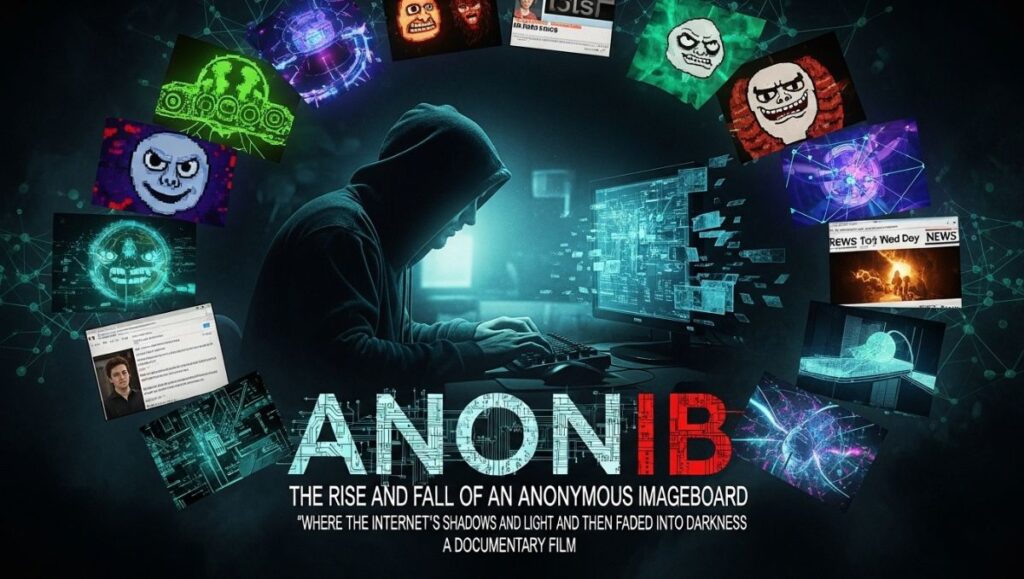The internet has always been a place of experimentation — a digital frontier where communities form around shared interests, ideas, and, sometimes, controversy. Among the many platforms that emerged during the mid-2000s, AnonIB became one of the most infamous. Once known as a gathering space for anonymous users to post images and discussions freely, it later became synonymous with privacy violations and legal investigations.
Although AnonIB has long since been shut down, its story remains an important part of understanding how online anonymity, free expression, and digital responsibility intersect in complex and sometimes troubling ways.
Origins of AnonIB
AnonIB, short for “Anonymous Image Board,” originated in the early 2000s, inspired by popular Japanese-style imageboards like 2channel and 4chan. The platform’s design was simple — users could create threads, post images, and reply to others, all without needing an account or personal information.
This structure encouraged free discussion and creativity. Users could share memes, artwork, or commentary without the barriers of identity or registration. Like many early forums, AnonIB began as a niche community that thrived on its sense of independence and anonymity.
However, the same anonymity that made the site appealing also made it difficult to regulate. As its popularity grew, different “boards” or sub-communities formed around a variety of topics — some harmless, others highly questionable. Over time, these unmoderated spaces would lead to serious ethical and legal concerns.
The Culture of Anonymous Imageboards
To understand AnonIB, it’s necessary to place it within the broader culture of anonymous imageboards. Sites like 4chan, 8chan, and AnonIB operated on similar principles: open posting, temporary threads, and user anonymity.
This structure created an environment where users felt liberated from social constraints. People could share controversial opinions, humor, or creative content without fear of judgment. Many early internet memes and viral trends actually emerged from these anonymous spaces.
However, the absence of moderation or accountability also fostered darker subcultures. When no one is identifiable, rules and ethics can easily be ignored. What began as digital freedom often devolved into chaos — and in the case of AnonIB, that chaos would become its downfall.
How AnonIB Worked
AnonIB’s interface was minimal and functional. Users could create a new “thread” by uploading an image and adding a text comment. Others could respond with their own images or messages. Unlike traditional forums, threads would eventually disappear as new ones replaced them — giving the site a sense of impermanence.
Boards were categorized by themes — ranging from photography and pop culture to adult content. Each board operated semi-independently, moderated by volunteers or sometimes not at all. This decentralization was part of AnonIB’s appeal: it was a place where anything could be posted and nothing was truly off-limits.
Unfortunately, this lack of moderation also meant that harmful material could easily spread. Over time, the site’s reputation shifted from being an underground internet forum to something far more controversial.
Controversies and Legal Issues
By the early 2010s, AnonIB had become associated with the posting of non-consensual images, including leaks and private photographs of individuals. These practices — sometimes referred to as “revenge porn” or “creepshots” — violated privacy rights and, in many jurisdictions, criminal laws.
Law enforcement agencies across multiple countries began investigating AnonIB as reports of privacy violations mounted. In the United States, Europe, and elsewhere, cases emerged linking the platform to image-sharing networks that targeted individuals without their consent.
Eventually, the combination of public outrage, media coverage, and police action led to the site’s shutdown. In 2018, AnonIB was seized by Dutch authorities in coordination with international cybercrime units. The seizure marked the end of one of the most infamous imageboards in internet history.
Impact on Online Privacy Laws
The AnonIB controversy played a significant role in shaping conversations around digital privacy, consent, and accountability. Governments and tech companies began reevaluating how online platforms handle user-generated content.
Laws addressing the sharing of non-consensual images — often referred to as “revenge porn laws” — became more widespread. Social networks like Facebook, Twitter, and Reddit implemented stricter policies against sharing private or intimate material without consent.
AnonIB’s downfall served as a cautionary tale: it highlighted how absolute anonymity, without checks and balances, can enable serious harm. It also accelerated the global movement toward establishing clearer ethical and legal standards for online behavior.
The Broader Implications of Anonymity
AnonIB’s story reveals much about the nature of digital anonymity. The platform’s existence was rooted in one of the internet’s founding ideals — the freedom to communicate without identity constraints. In theory, anonymity allows people to express themselves freely. In practice, it also removes accountability.
When users know they cannot be traced, the line between freedom and abuse becomes dangerously thin. AnonIB’s misuse of anonymity shows how technology, when left unregulated, can amplify harmful behaviors that would never be acceptable offline.
Yet, anonymity itself isn’t inherently bad. It remains a cornerstone of online activism, whistleblowing, and privacy protection. The challenge lies in creating systems where anonymity coexists with ethical responsibility — a lesson the internet continues to learn.
The Role of Technology Companies and Moderation
One of the biggest takeaways from the AnonIB era is the need for active moderation and ethical oversight. Platforms that rely on user-generated content must find ways to protect both freedom of expression and user safety.
After AnonIB’s shutdown, many modern platforms invested heavily in AI-driven moderation tools, user reporting systems, and clearer community guidelines. Companies like Reddit and Discord introduced stronger content policies, learning from past cases where unregulated anonymity led to widespread abuse.
In addition, digital platforms began cooperating more closely with law enforcement when serious privacy violations occurred. Transparency reports and ethical standards became part of the public conversation, marking a shift toward greater accountability in online spaces.
Legacy and Lessons Learned
Though AnonIB no longer exists, its legacy persists. It remains a powerful reminder of how quickly online communities can transform — from harmless sharing hubs to legally and morally compromised networks.
The site’s shutdown didn’t end online anonymity, but it forced a global reckoning with how that anonymity should be managed. It also inspired new discussions about digital consent, the right to privacy, and the responsibilities of online platforms.
For historians of internet culture, AnonIB represents both a warning and a lesson. It showcases the internet’s ability to connect people in unprecedented ways — but also its capacity for misuse when ethics and regulation fall behind technology.
Anonymity in the Post-AnonIB Era
Since the fall of AnonIB, the internet has undergone a significant transformation. Anonymous forums still exist, but most mainstream platforms now require at least partial identity verification. At the same time, privacy-focused tools — like end-to-end encryption, VPNs, and decentralized networks — have continued to evolve.
The legacy of sites like AnonIB has also influenced education on digital ethics. Schools, governments, and advocacy groups now emphasize online consent, personal data protection, and digital responsibility. In this sense, AnonIB’s collapse helped shape a more conscious digital society.
However, new challenges continue to emerge. Deepfake technology, encrypted file-sharing, and decentralized social networks have created new frontiers for both freedom and abuse. The same questions that AnonIB raised — about anonymity, consent, and accountability — are still relevant today.
Conclusion
The story of AnonIB is not just about a website — it’s about the evolution of the internet itself. It reflects the tension between privacy and exposure, freedom and control, community and exploitation.
While AnonIB was eventually shut down due to its association with illegal activity, its existence underscores a crucial truth: technology alone cannot guarantee ethical behavior. The internet’s power lies in its users, and with that power comes responsibility.
As we continue to build the future of online communities — from social media to decentralized networks — the lessons of AnonIB remind us that freedom must always be balanced with respect for others’ rights. Anonymity can be a force for good, but without accountability, it risks becoming a tool for harm.
The fall of AnonIB marked the end of one chapter in anonymous internet culture and the beginning of a broader conversation about how to make the digital world safer, fairer, and more humane.






